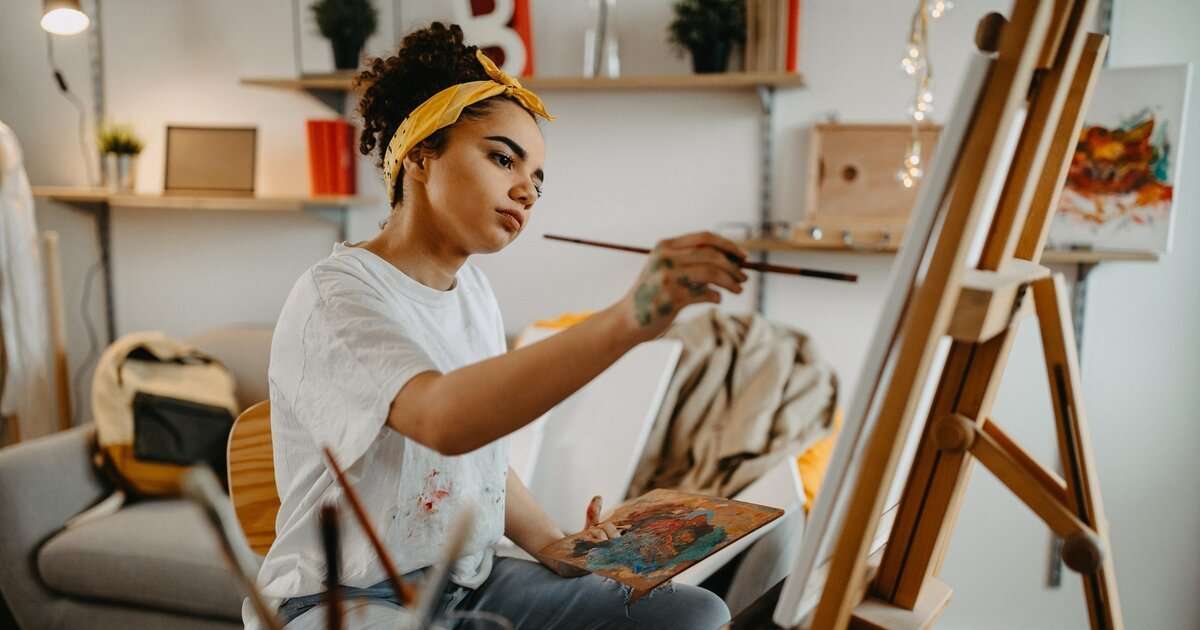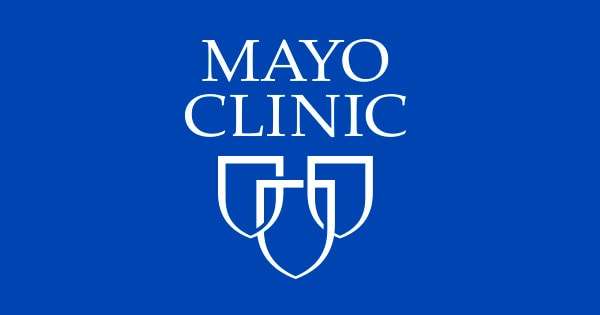Reginal E. Payne II, Jayne O’Donnell and Marquart Doty, USA TODAY

Music and art are increasingly being used as tools for therapy for high school students who have faced trauma — from sexual abuse to homelessness — and have been proven to help students cope, both physically and psychologically.
Studies have shown that participating in music and art can alleviate pain, help people manage stress, promote wellness, enhance memory, improve communications, aide physical rehabilitation, and give people a way to express their feelings.
“We have a lot of kids who come from really traumatic backgrounds… and some days it’s just trying to keep them from fighting one another,” said Katie Meyers, a clinician at Levine School of Music and an associate professor at Howard University in Washington. “The really cool thing about music therapy, for me, is that students relate to music and enjoy music. I’ve seen that keep really dangerous things from happening or escalating.”
Music therapy seems to work very well with those suffering from mental health disorders such as depression and anxiety. It’s often used in therapy with patients on the autism spectrum, and in physical rehabilitation for people who suffer from neurodegenerative diseases like Parkinson or Alzheimer’s.
Music has the same effect on the brain as the smell of lavender and chamomile, which produce “feel-good” chemicals like dopamine. A 2011 study conducted by researchers from McGill University in Montreal found that music plays a significant role in causing a good mood. It showed that dopamine levels were 9% higher in participants who had listened to music they enjoyed.
“There’s a lot of research that shows the relationship between music and its ability to alter moods,” said Meyers.
But spending in public schools on arts and music education has been flat for a decade, particularly in low-income schools. In fact, 40% of secondary public schools didn’t require the study of arts or music for graduation in the 2009-10 school year, according to a study by the National Center for Education Statistics, part of the Department of Education.
What makes things worse is the “equity gap.” Within the school system there are “high-poverty” and “low-poverty” schools, the study found. Higher poverty schools have even less funding than the low poverty — or wealthier — schools.
“I definitely think there’s a stigma against therapy,” Baltimore high school art teacher Kristen Yoder says of the African American community her students come from. “Trauma becomes normalized, especially these tremendous traumas and there’s not always a recognition of a need to process it.”
Students will say, “‘I’m not crazy and I don’t need therapy,'” she says.
Art is “a special way for the kids to get some of the release,” says Yoder who teaches at Renaissance Academy. “The more tools you give kids to express themselves, the more equipped they’ll be to handle stuff their way.”
How Music, Art Helps
Larry Owens of Baltimore was recently released from prison after 40 years for murder. But while in prison, he learned the importance of the arts for helping cope with trauma. Shy and reserved, he discovered a talent he never knew he had: drawing and painting.
Art “kept me away from people I didn’t like,” he said. “My mouth can say things real nasty when I get tired of someone, but when I’m drawing, threaten me all you want.”
“That’s all I did all day long. Out in the yard. In the art room. Or drawing in my cell.”
More:
Music and art is a natural medicine to the ‘mind and soul’ of teen
Teen suicide is soaring. Do spotty mental health and addiction treatment share blame?
Domestic violence ‘code of silence’ contributes to prevalence across races, classes
Owens didn’t even know he could draw until the sudden death of Motown singer Tammi Terrell in 1970. Distraught, he began to draw the beautiful young singer and has been drawing ever since.
Owens’ childhood friend, Donald Shakir, was convicted of murder at the same time as Owens and found his peace in prison through Motown too. But he used a singing voice so beautiful it’s hard to imagine cellmates were ever bothered by it. But there were plenty who demanded he stop.
The songs that soothed him brought back too many painful memories for others who would demand he stop singing.
Shakir believes everyone who came out of prison needs therapy, including him. He’ll sing as he walks all over Baltimore and while he walks around the Patapsco flea market where Owens sells his artwork on the weekends.
“We brought too much excess baggage out of prison to say we don’t need it,” says Shakir.
Owens, on the hand, prefers simply art to therapy.
A therapist, he says, “can not tell me what I’m thinking and feeling inside.”
The Levine school has five people who are certified in music therapy, and the focus is on using music to help traumatized students. A certified music therapist is like an occupational or physical therapist: They are trained to use music to help people get better, says Rhonda Buckley, the school’s head of campuses and strategic development. Students play instruments, write songs, play instruments together or just listen to and discuss music in more formal music therapy sessions.
Buckley, a saxophonist who founded a Washington arts center for disadvantaged children in 2000, sees music as a good way for people of all ages to cope with trauma and stress. Creative outlets are about “focus” and concentrating on arts shifts a person’s thinking away from the trauma they experienced.
“Music can address the issues we face with homelessness, abuses,” she said.
But just listening to music or playing it helps, she said. You don’t need a certified therapist.
Reginal Payne and Marquart Doty are fellows in the Urban Health Media Project, which O’Donnell co-founded.
For centuries, humans have understood the impact that the arts can have on the body, mind and soul. Now that we have the technology to track bodily responses like heart rate, brain activity, and breath rate we have proof of that impact. Music and art can reduce stress. Of special interest to many people is the impact that the arts have on reducing stress.
How Does Music and Art Reduce Stress?
Countless studies have shown that participating in music and art can manage stress and promote wellness. It also gives a way for people to express their feelings in a safe way especially when they can’t find the words to communicate it.
Becoming completely engaged with your music or art making can also lower stress levels similar to the way meditation improves focus. Additionally, listening to slow quiet music can relax the mind and body by slowing the pulse and decreasing the levels of cortisol, the body’s main stress hormones.
Sign up for a free self care guided meditation video series to try this technique for yourself.
How can I use Music and Art to reduce stress?
The easiest way to feel the benefits of the arts is to surround yourself with beautiful music and art. With this said, reduction in stress is more effective when engaging in music and art, not just passively enjoying it. Many people worry that they are not creative or talented enough to make art. The good news is that the effects of making music and art is not limited to a person’s skills or talents, it is available to anyone!
There are many ways to incorporate creating art or music into your daily life. Exploring different instruments, singing along with the radio, or trying different kinds of arts and crafts can be a start. Many adults have found that adult coloring pages is an easy and relaxing way to decrease stress.
Keep in mind that all you need is a few minutes to explore the benefits of the arts. Small actions can still have a positive impact on your mental health. This may include starting a daily ritual to begin or end your day with creativity, enjoying mood-boosting music, or combining the music and art!
Sign up for a free guided meditation video series to explore how music can help you de-stress.
When people think of therapy the most common therapy session that comes to mind probably includes a person sitting across from or lying down beside a therapist and talking about their feelings. But what if you can never quite find the right words to say to express yourself or talking through what you are feeling doesn’t seem to be helping? The truth is therapy comes in all shapes and sizes. People are looking for and creating new ways to help cope with the stresses in their lives.
For breast cancer, more and more people are finding that art and music can be healing and effective ways to cope with their diagnosis and reduce the stress that comes with it.
What is art therapy and how do I do it?
Art therapy can be an effective way to treat anxiety, depression and fatigue, three common side effects of breast cancer treatment. It can allow you to express your feelings without having to talk it out with a stranger. It can also be a much more affordable form of therapy if you lack private insurance coverage for traditional therapy.
Therapy can be expressed through different types of art. You can choose to draw, paint, or work with clay – whatever medium feels most comfortable and natural for you. People may find that working with their hands is more relaxing and because you are not obligated to explain yourself, it can build self-esteem and self-exploration. The best thing is, you don’t need consider yourself a creative or artistic person to benefit from art therapy!
To learn more about art therapy and to find a therapist in your community, visit the Canadian Art Therapy Association.
What about music therapy?
Similar to art therapy, music therapy offers an alternative way to connect with your emotions and help improve your quality of life after a breast cancer diagnosis. It has also been known to help manage pain symptoms.
Also, like art therapy, you don’t need to have any skills playing instruments or creating music. Music therapy can take on many different forms including listening to music, playing music, songwriting, or singing. Music therapy can be done in a group or private setting.
To learn more about the benefits of music therapy and to find a therapist near you visit the Canadian Association of Music Therapists.
It’s important to remember that you do not have to have any artistic or musical skills to benefit from these forms of therapy. Simply the act of participating and allowing yourself to express your inner thoughts in an alternative way can benefit you more than you know.
Photo by Debby Hudson on Unsplash



